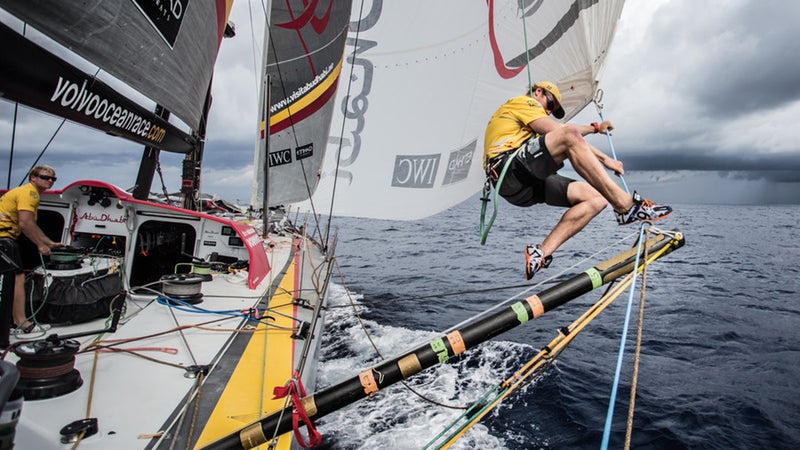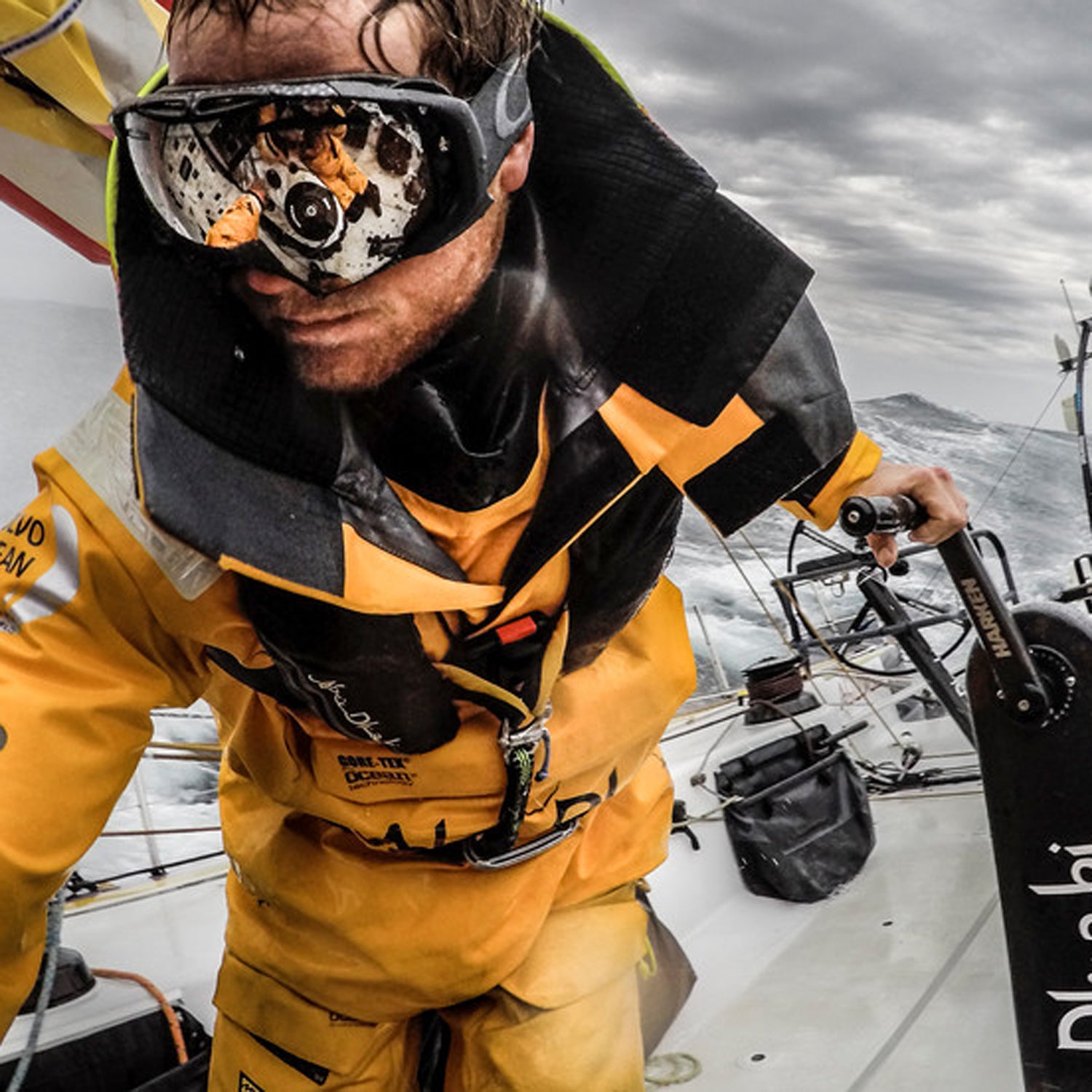Team Abu Dhabi sailed its way to victory on June 22 to wrap up the prestigious ��around the world—and it wasn’t by happenstance. Nor was it because of superior boat design or technical advantage. For the first time in the race’s nearly 40-year history, each of the seven teams raced a boat that was uniformly designed, so factors like aerodynamics didn’t affect speed. In other words: It was an athlete’s race to win or lose.
What was the secret? Natural athleticism, sure. Getting in good enough shape to regularly lift and haul 1.5 tons of equipment with each tack and jibe in 20-foot swells? That required a rigorous six-month dry-land training program and continual fitness support throughout the race—and it just might be what pushed Team Abu Dhabi over the edge to clinch the title in the world’s most unforgiving sailing contest.��
“It makes a huge difference in the race,” says veteran bowman/trimmer/helmsman Justin Slattery. “With only eight crew [the boat has capacity for 12], the physical demands are significant. We’ve got six guys grinding [hand-cranking the winches to maneuver and power the boat], and you can see the difference boat-to-boat.”��

One of the most important goals in pre-race training for an event of this physical caliber and duration, says Abu Dhabi’s sports science manager Pete Cunningham, is simply injury prevention. Losing a set of hands to a busted shoulder or torn muscle can be a massive setback in a race where sleep comes in four-hour shifts at best—though you’re lucky to get three hours—and exhaustion is the status quo. “We tried to look at what you do on the boats,” Cunningham says. “So it’s lots of lifting and back work, lots of weights, and lots of core training.”��
Naturally, he says, the lower body will deteriorate a bit when you spend three or four weeks at a time at sea, but squats and lunges can combat that problem on board (although mostly, precious free time goes to sleeping). It’s critical, though, to maintain upper body mass and strength. “You start the race quite healthy and fit, in the best shape,” says bowman/helmsman Luke Parkinson, 25. “And over nine months of intense racing, you slowly decline in fitness levels and health. Just having a cough can slowly wear you down.”��
Cunningham’s pre-race program, a mix of circuit training, weight training, and cardio, was aimed to minimize the potential for decline and injury. During the race, team physiotherapist Pierre Ainscow worked with the crew during stopovers to help them recover and retain as much of their acquired fitness as possible. The other key demand both before and during the race: energy. “Half my job was looking at their diets,” Cunningham says. “We worked very hard at putting together 6,000 to 7,000 calories per day.”��
��
The team arrived in Cascais, Portugal, six months before the race to begin training together. Five or six days a week, the crew met for morning workouts at 7 a.m. before heading out for a full day of sailing. “We’re all a very competitive bunch, and we pushed ourselves pretty hard,” Slattery says. “It was very intense.”��
If you’re thinking about an extreme endurance adventure of your own, Team Abu Dhabi’s hard-core pre-race training plan is guaranteed to get you in rock solid, ready-for-anything shape. Below, Cunningham shares a typical week of his program.��
Cardio
Four times per week (minimum of eight hours total)
- Prolonged steady state aerobic exercise: 90- to 120-minute gym sessions on a bike, rower, or treadmill. You can mix it up on different machines. ���ϳԹ��� cycling requires a minimum of two hours.
Weights��
Three sessions per week, weights vary
- Chest and shoulders: Push ups (2 sets, 20 reps), bench press (4 sets, 8-10 reps), incline bench press (3 sets, 10 reps), push press (3 sets, 8 reps), shot putt (3 sets, 8 reps), rear delt row (3 sets, 10 reps), curls (3 sets, 8 reps), pushdowns (3 sets, 8 reps).��
- Legs and back: Deadlifts (4 sets, 8-10 reps), cable squat to row (4 sets, 8 reps), one-arm dumbbell snatch (4 sets, 8 reps), bent over row (3 sets, 8 reps), lat pull-downs (3 sets, 8 reps), seated row (3 sets, 8 reps), ��(3 sets, 8 reps).��
Abs and Core��
Three sessions per week (directly after weights)��
- 20 reps each of crunches, bicycle crunches, oblique crunches, sit ups, flat back leg lifts, flat back toe touches, jack knifes, , and .��
- 30 reps each of planks, one-leg planks, side planks, , and V-ups
Circuit Training
Substitute for an aerobic session once per week
- 60-minute circuit: 2 sets of 20 reps for each of the following: squat, uni rotational row, push-up, bent-over row, rower machine, overhead press, rear delt row, flat fly, seated row, cable pushdown, sit up, spin bike, curl, lying leg raise, hi-lo chop, lower body twist, chop, treadmill jog 500 meters


